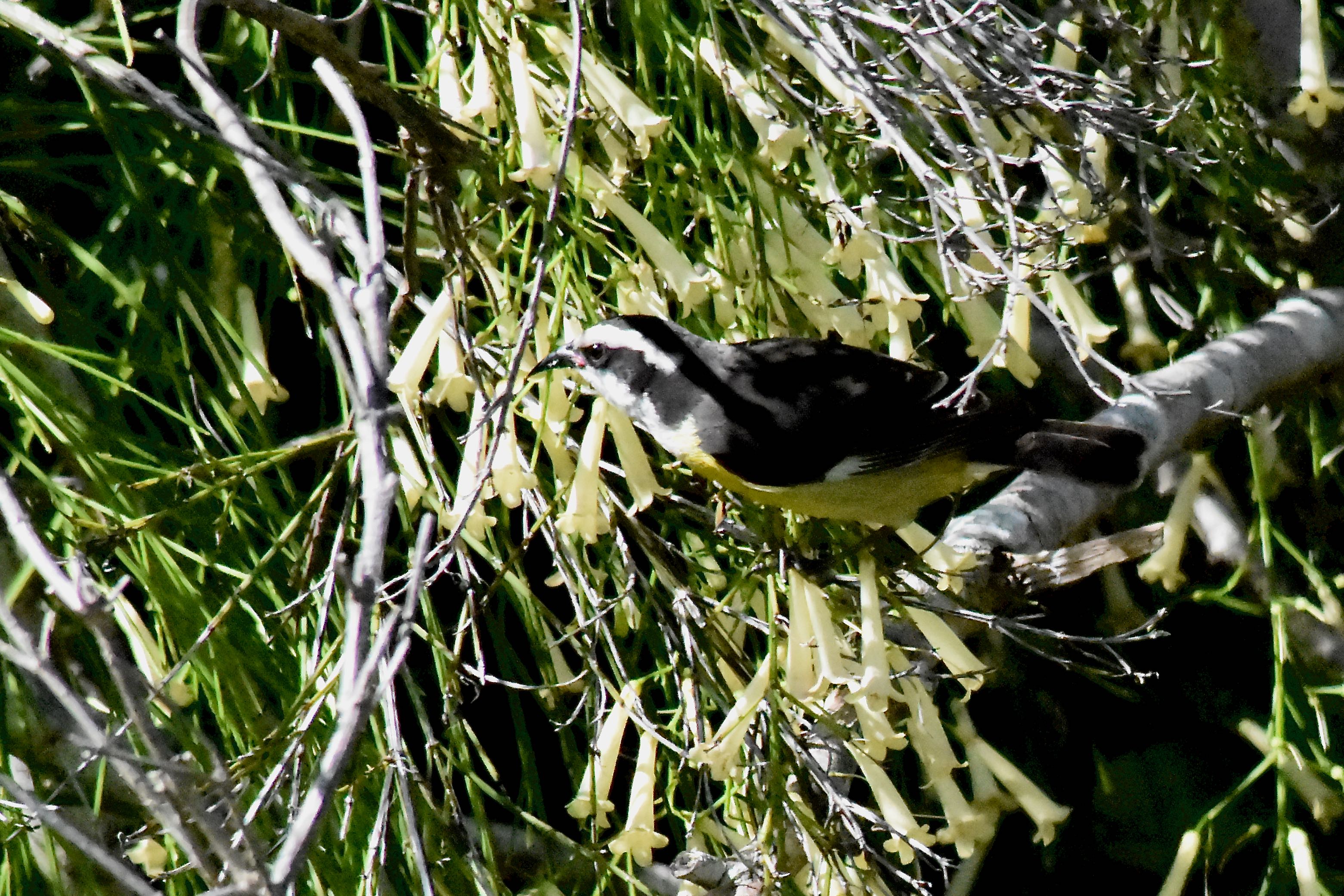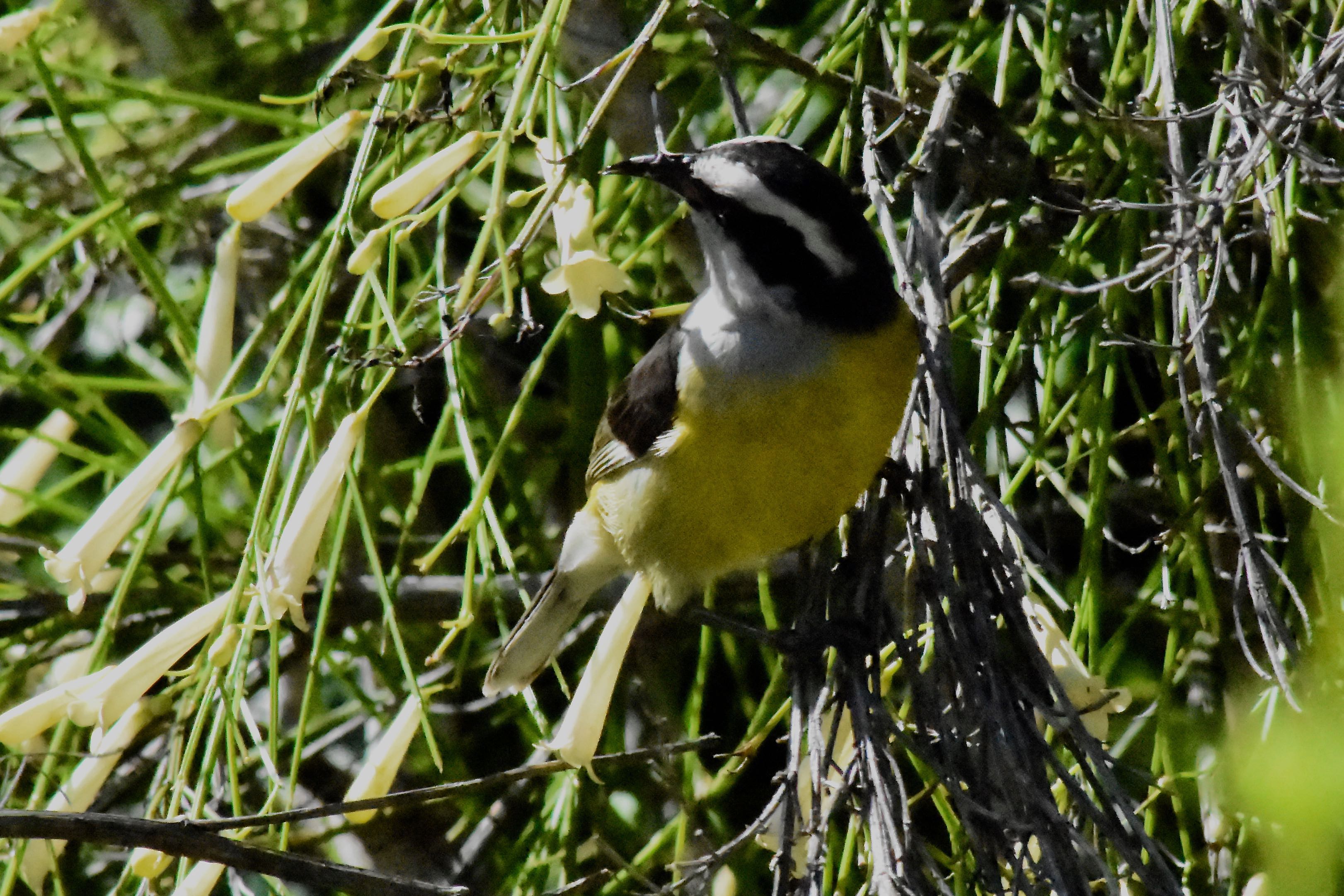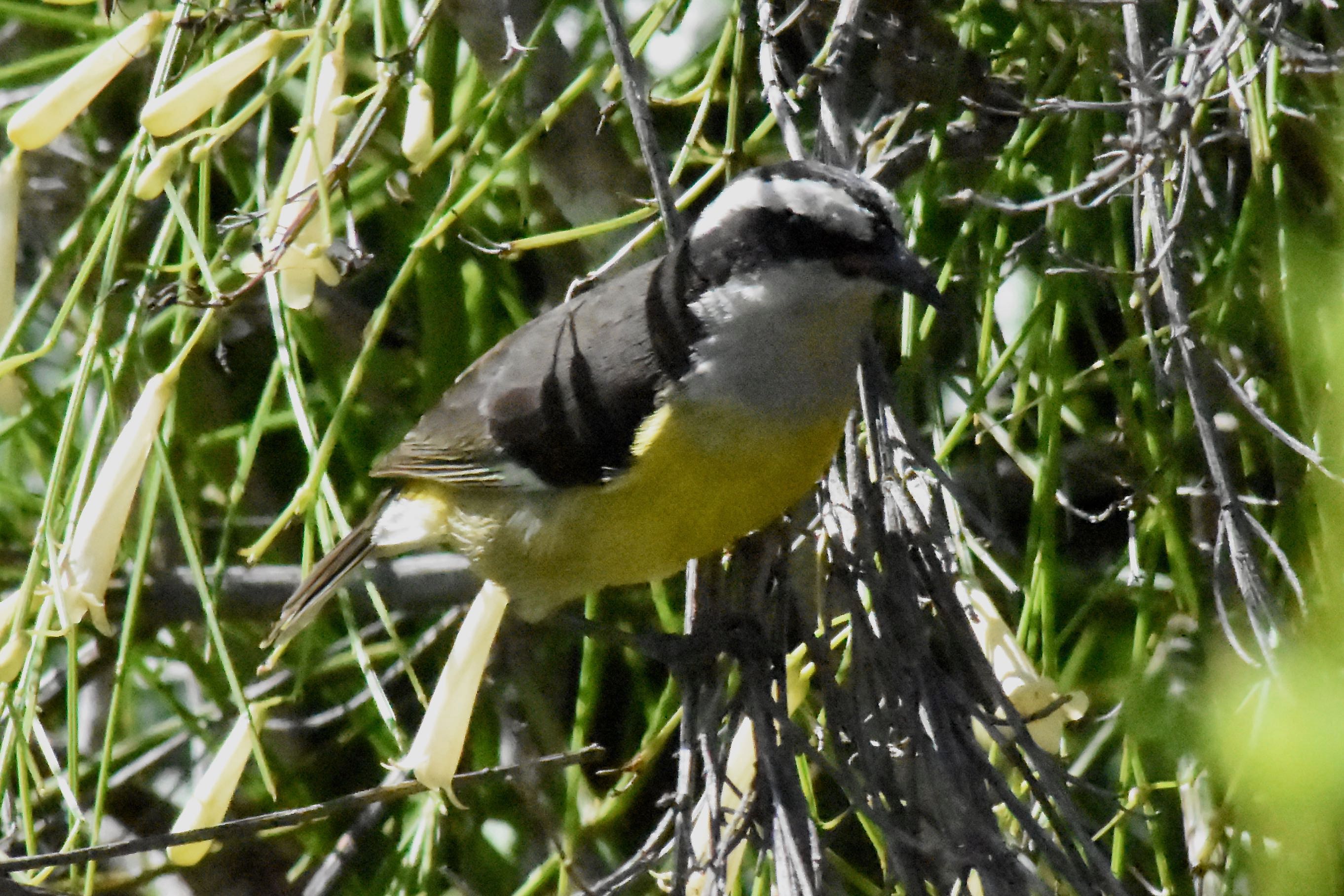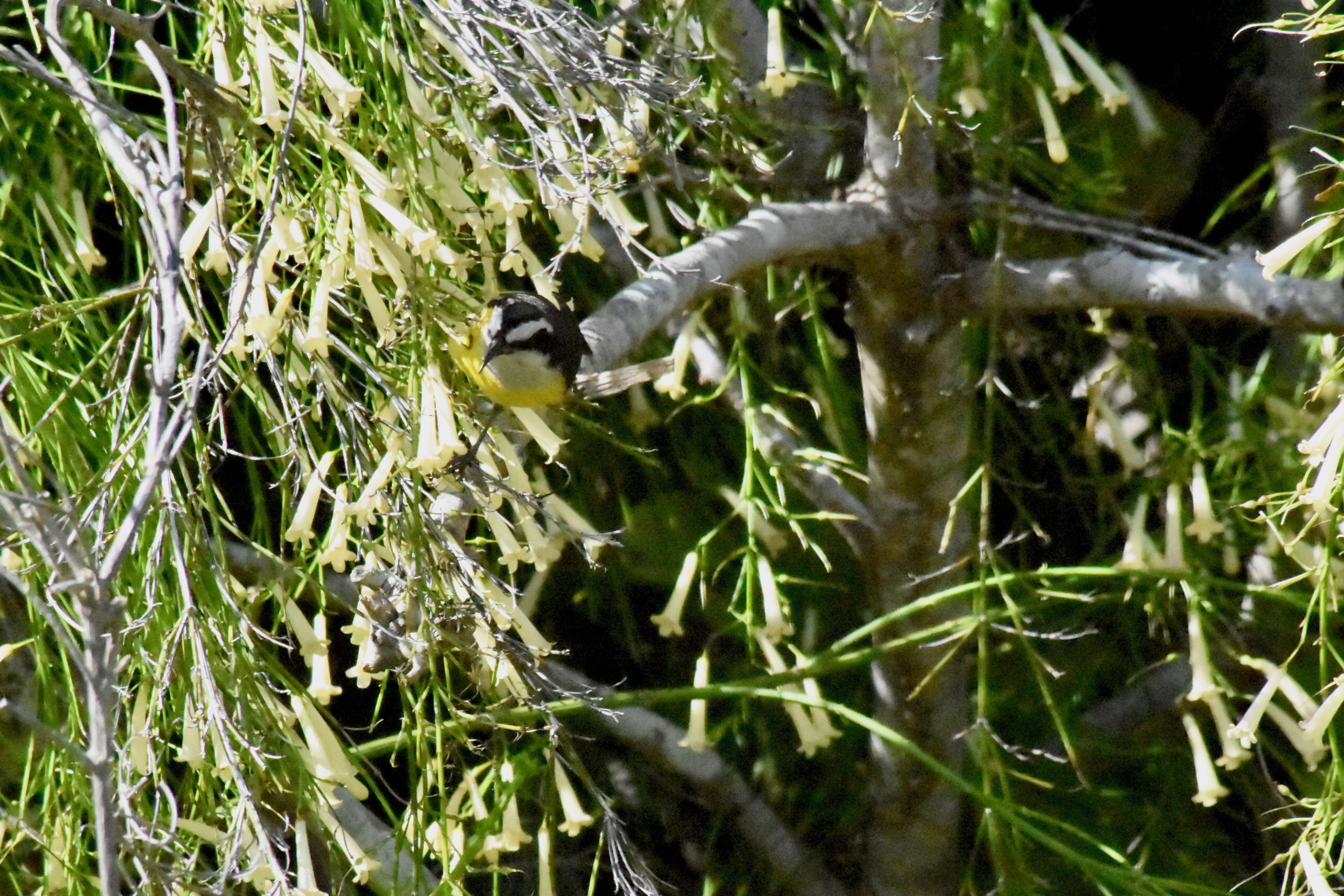
Bananaquit, photographed at Georgetown, Grand Cayman Island, Grand Caymans, in November 2017.
Bananaquits, Coereba flaveola, are common birds. Just not here in Florida. Travel through the islands of the Caribbean and you're likely to encounter one or more during your journey.
But here in the Sunshine State, they are vagrants, birds that stray off course somehow, most likely from the Bahamas, and occasionally find their way to our shores. But they're not migratory and tend to stay within a relatively set range.
Bananaquits have a bright "banana" yellow underside, but the name comes from their fondness for ripe bananas. They are small birds, four or five inches long, with a dark, downwardly curved bill, black and white stripes that cover the face and head and a dirty-gray throat. Males and Females have the same color pattern, but the ladies of the species can be a tad duller. Juveniles are a kind of yellow/olive mix.
Thing is, there are 41 recognized subspecies of bananaquits, so this is a bird that can vary greatly in its looks. One subspecies, in fact, is entirely sooty gray. Much of the variations are island-specific because of their sedentary ways.
Their range extends through the Bahamas and the Caribbean, through Mexico, Central America and most of South America to about Argentina. Oddly enough, Cuba is not part of their range. On the other hand, it is the "national bird" of Puerto Rico. Bananaquits take to a variety of habitats, including scrub, the edges of tropical forests, open fields, parks and the suburbs.
Bananaquits have the rather unusual habit of building three nests. Both males and females will build separate roosting nests, globe-like structures made of leaves, grass and plant fibers with a side entrance. During mating season, males and females will come together to build a third nest in which eggs will be laid. Males are highly protective of their mates up until the time that the eggs are layed, then become less attentive. Eventually, they start looking for a new mate while mom cares for the young. However, some bananaquit males will stick around and help feed and defend their offspring.
The timing of nesting season varies — it can coincide with the beginning of the wet season, or the dry season. Or it can be any time of the year. Females lay two to four eggs that require 12 or 13 days of incubation. Mom does all of the sitting. She'll care for her brood for two or three weeks, by which time they're ready to strike out on their own. Bananaquits can have two or three broods during the year. Their diet is mostly nectar and small fruit, including bananas. They feed like hummingbirds on the nectar of tubular flowers but unlike hummingbirds, they can't hover. Instead, they'll cling to flowers while they sip their sweet stuff. They'll also eat bugs, including flies, ants and beetles. They'll feed their young mostly insects.
Bananaquits are also called sugar birds. They have been classified as the sole member of Coerebidae, but are currently listed as a member of Thraupidae, the tanager family.



